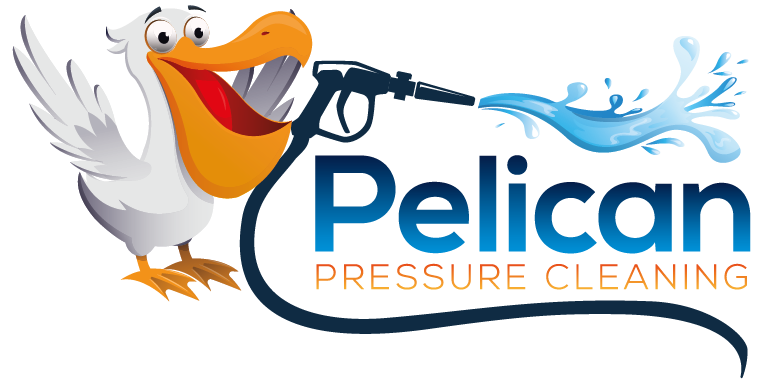When it comes to cleaning delicate surfaces, high-pressure washing isn’t always the best solution. In fact, excessive force can cause damage to softer materials like wood, sandstone, and painted surfaces. That’s where low-pressure cleaning techniques come in. Using advanced cleaning solutions and gentle water pressure, these methods effectively remove dirt, mould, and grime without harming the surface underneath.
In this blog, we’ll explore the benefits of low-pressure cleaning, the most effective techniques, and why it’s the ideal choice for delicate surfaces.
Why Choose Low-Pressure Cleaning?
Low-pressure cleaning, also known as soft washing, offers a safe and effective alternative to traditional pressure washing. Here’s why it’s the preferred method for delicate surfaces:
- Prevents Damage: High-pressure water can strip paint, crack wood, and erode soft materials like sandstone. Soft washing uses minimal force to avoid this risk.
- Kills Mould and Algae at the Root: Unlike high-pressure washing, which only removes surface grime, soft washing uses biodegradable cleaning agents that kill mould, algae, and bacteria at their source.
- Eco-Friendly: Low-pressure techniques require less water and often use environmentally safe cleaning solutions.
- Longer-Lasting Clean: By eliminating contaminants at the root, soft washing prevents rapid regrowth, keeping surfaces cleaner for longer.
- Safe for Various Materials: Ideal for timber, render, painted surfaces, sandstone, roof tiles, and other delicate materials.
Key Low-Pressure Cleaning Techniques
1. Soft Washing
Soft washing involves applying specialised cleaning solutions using low-pressure water. These solutions break down grime, kill organic growth, and gently rinse away dirt without the need for force.
- Best for: Roofs, painted walls, wooden decks, rendered surfaces, sandstone, and cladding.
- How it works: A chemical solution (usually a mix of water, surfactants, and biodegradable disinfectants) is sprayed onto the surface and left to dwell before being gently rinsed away.
2. Steam Cleaning
Steam cleaning uses heated water vapour to lift dirt, grease, and stains from delicate surfaces. The controlled application of steam allows for deep cleaning without the risk of water damage.
- Best for: Natural stone, tiled surfaces, and historic buildings.
- How it works: A steam generator produces heated vapour, which is applied to the surface at low pressure, loosening dirt and grime without the need for harsh chemicals.
3. Foam Cleaning
This method involves applying a thick foam cleaning agent that clings to surfaces, breaking down dirt over time before being rinsed off with low-pressure water.
- Best for: Commercial buildings, painted exteriors, and large surface areas.
- How it works: The foam sits on the surface for a set period, allowing the cleaning agents to work effectively, before being rinsed away.
4. Brush-Assisted Low-Pressure Cleaning
For particularly delicate surfaces, using soft brushes in combination with low-pressure water ensures thorough cleaning while avoiding damage.
- Best for: Wooden decking, historic buildings, and fragile exterior finishes.
- How it works: A gentle brush is used alongside low-pressure water to manually loosen dirt and grime.
Where to Use Low-Pressure Cleaning
Low-pressure cleaning is particularly beneficial for:
- Heritage and Historic Buildings: Protects ageing materials from deterioration.
- Rendered and Painted Surfaces: Prevents chipping, fading, and damage.
- Roof Cleaning: Ensures safe removal of moss and lichen without lifting tiles.
- Wooden Decking and Fencing: Preserves the integrity of the wood while removing stains and mould.
- Sandstone and Natural Stone: Maintains the stone’s structure without erosion.
Why Professionals Are Best for Low-Pressure Cleaning
While DIY cleaning might seem like a cost-saving option, hiring professionals ensures the best results. Trained experts:
- Use the right cleaning solutions for each surface.
- Have specialised equipment that applies low-pressure water safely.
- Understand the correct dwell times for cleaning agents to work effectively.
- Prevent damage by using precise techniques tailored to different materials.
Final Thoughts
Low-pressure cleaning is a game-changer for maintaining delicate surfaces without the risk of damage. Whether it’s a historic building, a timber deck, or a painted exterior, this method offers a safe, effective, and long-lasting clean. By choosing the right technique and working with professionals, you can keep your property looking its best while ensuring its structural integrity remains intact.
Ready to experience the benefits of professional low-pressure cleaning? At Pelican Pressure Cleaning, we specialise in safe and effective cleaning solutions tailored to delicate surfaces. Contact us today for a free quote and let us restore your home or business with expert care!
